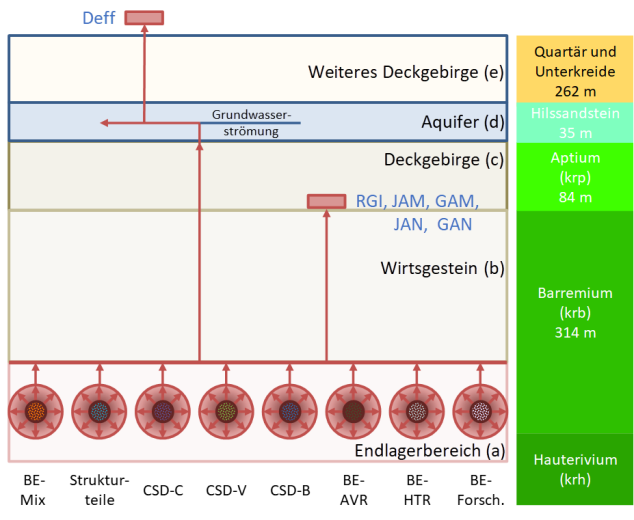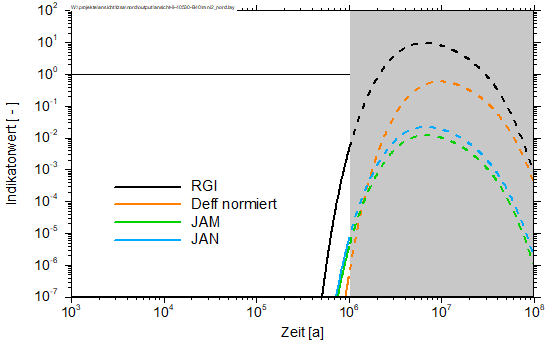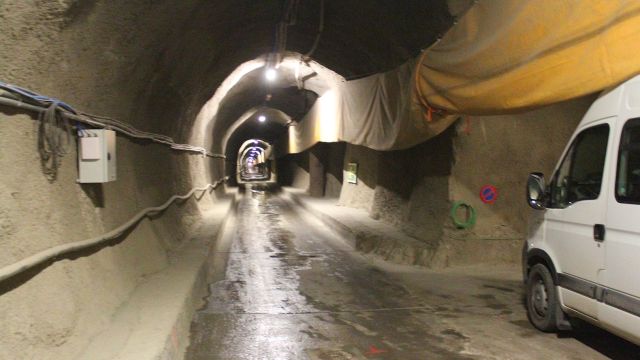
High-level radioactive waste in a repository in clay rock: examining and presenting the containment of radionuclides
For the development of this repository model, it is assumed that backfill materials in the underground workings and parts of the host rock that were desaturated - dried out, so to speak - during the construction of the repository will be completely resaturated by pore water from the host rock within a few centuries after the closure of the repository.
Geotechnical barrier already functional upon radionuclide release
Before the emplaced containers are so severely corroded due to contact with the pore water that radionuclides can be released, the excavation-damaged zone around the mine workings will have closed again and the geotechnical backfilling and sealing systems will already be functional. The failure of the containers is assumed after 5,500 years. Subsequently, the radionuclides will be mobilised at specific rates from the different types of waste (spent fuel assemblies (FA), compacted metal parts (CSD-C, structural parts) and vitrified waste (CSD-B, CSD-V)) and will be dissolved in the pore water.
In all cases, the radionuclide I 129 is dominant. Stronger sorbing radionuclides, especially actinides, are completely retained in the clay rock.
Estimated additional effective dose to individuals must be no more than in the range of 10 μSv/a
The safe containment of radioactive waste in the repository system is assessed in accordance with Section 4 of the Ordinance on the Safety of Radioactive Waste Disposal (EndlSiAnfV) for the final disposal of high-level radioactive waste on the basis of the calculated proportion of
- the mass released annually or during the assessment period of 1 million years (indicators JAM and GAM), and
- the number of atoms released annually or during the assessment period of 1 million years (indicators JAN and GAN).
of all radionuclides originally emplaced in the CRZ.
In addition to these four indicators, the radiological negligibility index (indicator RGI), which is based on the requirements for simplified demonstration of the 2010 safety requirements, and the annual effective dose for individuals (indicator Deff) were calculated. This indicator shows the potential additional annual radiation exposure for a person. According to Section 7 of the EndlSiAnfV, the estimated additional effective dose for individuals of the population must not exceed 10 μSv/a for expected evolutions. Except for Deff, the indicators represent normalised quantities. For better comparability, the calculated effective dose is therefore also normalised to the protection goal. The locations for which the indicator values were determined in each case are marked in Figure 1.
In the assessment period, all indicators lie orders of magnitude below the specific thresholds
The analysis of the time-dependent indicators has shown that the slow diffusion-controlled transport in the clay rock results in the maximum of the indicator values in the considered model only occurring after the end of the detection period and the maximum values in the detection period only occurring at one million years.
In general, the indicators all show similar results and time histories. However, they differ in terms of the distance of the maximum indicator value from the respective limit value of the Repository Safety Requirements Ordinance. They all lie below the specific limit values by orders of magnitude in the assessment period. Thus, the safe containment of radionuclides in a thick clay formation can be demonstrated in principle for the considered repository type.
However, the analysis also shows that the annual effective dose for individuals (Deff) normalised to the limit value is shifted in time compared to the other indicators due to the additional transport time of the radionuclides in the clay rock. The Deff therefore still lies below the values of the other indicators during the assessment period but exceeds them at later times. This shows that the safe containment of radionuclides in the CRZ cannot be demonstrated by the indicators JAM, GAM, GAN and JAN alone.
Project highlights Disposal
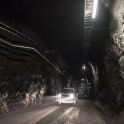
When evaluating repository systems in crystalline rock, the possible fracturing of the rock is a challenging variable. In the CHRISTA-II research project, GRS scientists have developed modelling for such a system and studied the influence that various parameters can have on the underground transport of contaminants over thousands of years.
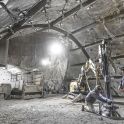
It is unquestionable that a repository for high-level radioactive waste must be safe. This applies both to the phase during which the repository is being constructed and operated and to the phase afterwards, when the waste is enclosed and all drifts and shafts are sealed. In a joint research project, scientists from GRS and BGE Technology GmbH have investigated how these two phases are interrelated and influence each other.
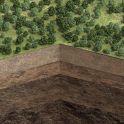
Germany is searching for a site for a repository for high-level radioactive waste. According to the Site Selection Act, the site with the best-possible safety is be found by means of a comparative procedure. But how can the requirements of the law be transformed into concrete scientific requirements? Together with other institutions, GRS researchers now present a first approach.
